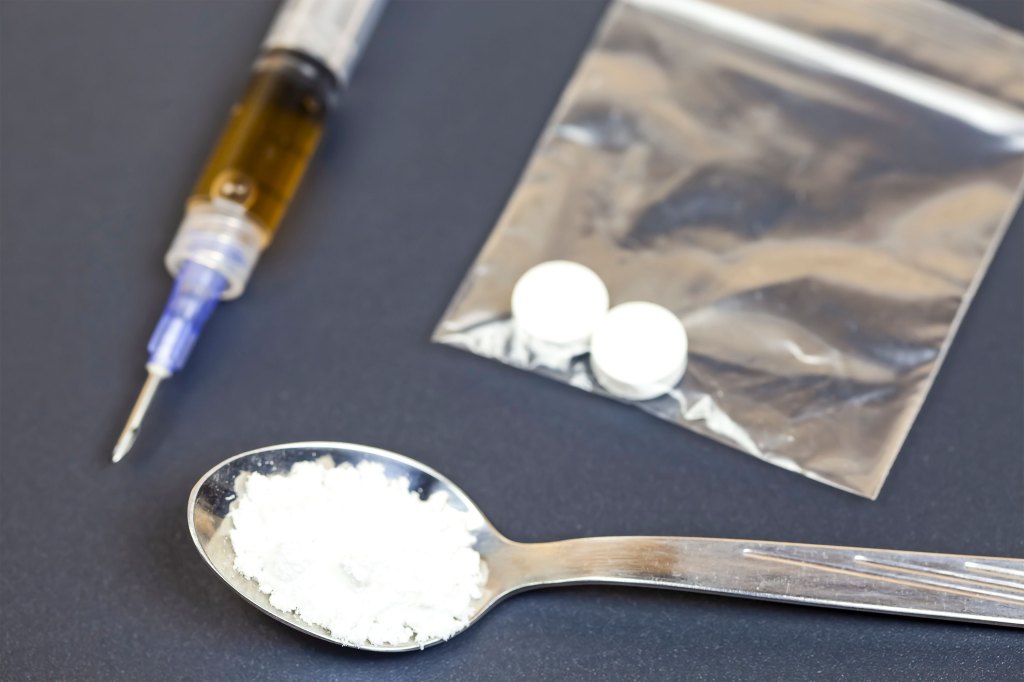A California ballot measure would roll back some decade-old criminal justice reforms that have become fodder for Donald Trump’s presidential campaign. Stiffer penalties for shoplifting have gotten much of the attention, but the measure also allows controversial treatment requirements for repeat drug offenders. California, Elections, Mental Health, States, Legislation, Substance Misuse KFF Health News
SACRAMENTO, Calif. — California voters are considering whether to roll back some of the criminal justice reforms enacted a decade ago as concerns about mass incarceration give way to public anger over property crime and a fentanyl crisis that has plagued the state since the covid-19 pandemic hit.
Proposition 36, on the November ballot, would unwind portions of a 2014 initiative, known as Proposition 47, that reduced most shoplifting and drug possession offenses to misdemeanors that rarely carried jail time.
Critics say that has allowed criminality to flourish and given those suffering from addiction little incentive to break the cycle. The law also has become a political weapon for former President Donald Trump and other Republican politicians who have tried to tie it to Vice President Kamala Harris to paint her as soft on crime. As California attorney general she took no position on the issue.
Much of the Proposition 36 debate has focused on the increased penalties for shoplifting, but the drug policy changes are even more dramatic. In addition to boosting penalties for some drug crimes, the measure would create a new “treatment-mandated felony” that could be imposed on people who illegally possess what are called “hard” drugs, including fentanyl, heroin, cocaine, and methamphetamine, and have two or more prior convictions for certain crimes.
Those who admit to the new felony would be required to complete drug or mental health treatment, job training, or other programs intended to “break the cycle of addiction and homelessness.” Those who complete the treatment program would have their charges dismissed, while failure could bring three years in prison.
The measure has opponents, including Gov. Gavin Newsom, warning about renewing a “war on drugs” that once helped swell California’s prison population.
Supporters counter that stricter penalties are necessary as overdose deaths from fentanyl crowd morgues. They also point to studies showing that more than 75% of people experiencing chronic homelessness struggle with substance abuse or a severe mental illness.
“We crafted this not to move people into any kind of custody setting, but to incentivize them into treatment,” said Greg Totten, chief executive officer at the California District Attorneys Association and a spokesperson for the initiative’s supporters.
Totten and others cast the measure as a way to revive drug courts, which they say waned in effectiveness after Proposition 47 removed the stick from what had been a carrot-and-stick approach.
Drug courts are led by a judge with a specialized caseload, use a collaborative approach to promote rehabilitation, and have been found to be effective in California and nationwide. Participants in California had “significantly lower rates of recidivism,” according to a study in 2006 commissioned by the Judicial Council of California: 29% were rearrested compared with 41% of a group who didn’t receive treatment.
The Center for Justice Innovation, a nationwide research and reform group that grew out of the New York state court system, found that drug court caseloads dropped across California after Proposition 47.
Still, advocates who favor decriminalization challenge the idea that the approach is effective and say coerced treatment violates people’s rights. Meanwhile, Lenore Anderson, a co-author of Proposition 47, said “we cannot pretend that this sort of feel-good idea that we’re going to arrest and incarcerate out of it is going to work. It never has.”
Proposition 47 led to an increase in property crime, but there is no evidence that changes in drug arrests sparked any increases in crime, found a recent study by the nonprofit, nonpartisan Public Policy Institute of California.
The latest reform effort leaves many questions, said Darren Urada of the University of California-Los Angeles Integrated Substance Abuse Programs. He was the principal investigator on UCLA’s evaluation of an earlier attempt to promote treatment.
“When policies are properly implemented, treatment obtained through courts can help people. However, there are a lot of details here that are not clear, and therefore a lot of opportunities for this to go poorly,” Urada said.
For instance, the ballot measure doesn’t say what would happen to someone who enters treatment but relapses, as is common; how long they would have to complete the program; or what would constitute completion for someone in long-term treatment for mental illness or substance abuse.
Those details were deliberately left vague so that local experts like community corrections partnerships, which are already established under existing law, could decide what works best in their jurisdictions, Totten said.
Totten expects a range of approaches including diversion programs and inpatient and outpatient treatment, and that judges would be guided by the recommendations of treatment professionals.
“I’m hopeful that that will help people who are really struggling with addiction, living on the streets, who engage in petty theft and other crimes in order to support their habit — that it will be a doorway into treatment for them,” said Anna Lembke, a Stanford University addiction expert.
The November ballot measure also would allow judges to send drug dealers to state prisons instead of county jails and boost penalties for possessing fentanyl. It would make it easier to charge someone with murder if they provide illegal drugs that kill someone.
The changes could increase California’s prison population, currently about 90,000, and its county jail and community supervision population, currently around 250,000, each by “a few thousand people,” projects the state’s nonpartisan Legislative Analyst’s Office. Opponents of the measure project that the increase would be far higher: 65,000 people, most for drug offenses and most of them people of color.
Newsom, one of the initiative’s most outspoken critics, argues that the November ballot measure lacks any funding; would reduce the $800 million in Proposition 47 savings, much of which has gone to treatment and diversion programs; and would only aggravate an existing lack of treatment alternatives.
“Prop. 36 takes us back to the 1980s,” Newsom, a Democrat, said in August as he signed a package of 10 property crime bills that he and legislative leaders tout as an alternative to the broader ballot measure.
Yet, illustrating the contentiousness of the debate, the ballot measure has been endorsed by some Democratic leaders, including San Francisco Mayor London Breed, San Diego Mayor Todd Gloria, and San Jose Mayor Matt Mahan, who often highlight its treatment requirement.
This article was produced by KFF Health News, which publishes California Healthline, an editorially independent service of the California Health Care Foundation.
KFF Health News is a national newsroom that produces in-depth journalism about health issues and is one of the core operating programs at KFF—an independent source of health policy research, polling, and journalism. Learn more about KFF.
USE OUR CONTENT
This story can be republished for free (details).








